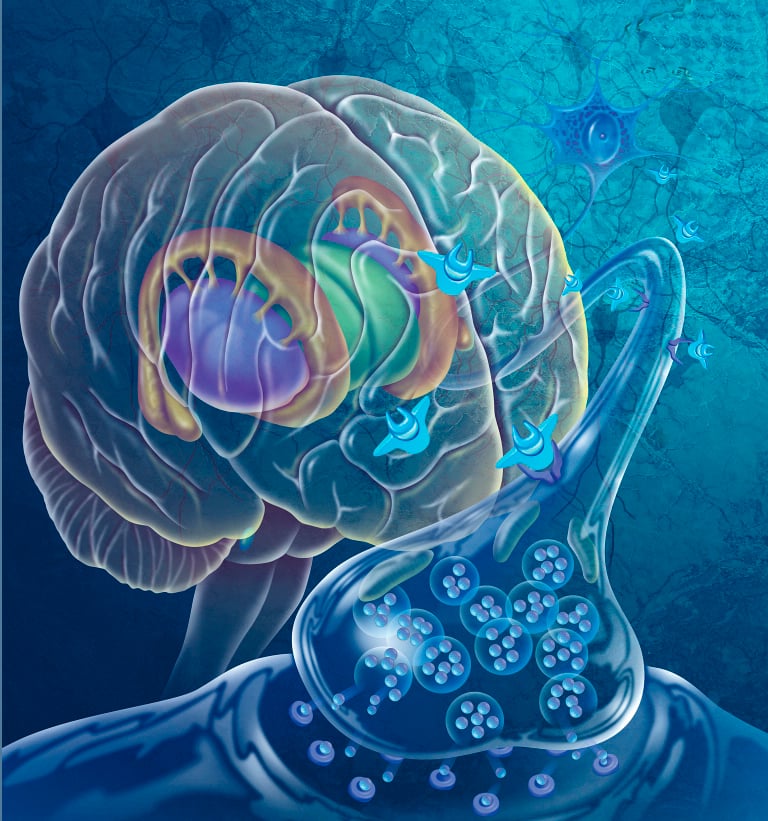Parkinson’s Disease (PD) is typically an adult-onset progressive neurodegenerative movement disorder that affects millions of people worldwide. Pathologically, PD is characterized by the profound and specific loss of dopaminergic (DAergic) neurons in the substantia nigra pars compacta (SNpc) of the midbrain. Other areas interconnected with the SNpc, the caudate and putamen, collectively known as the striatum, also show remarkable loss of their projection fibers. In accordance with insult to brain regions involved in controlling coordinated movements, the cardinal symptoms of PD include bradykinesia, resting tremor, rigidity, and postural instability (1). To date, research into the etiology of PD has revealed that most cases are sporadic, though some thirteen genetic loci have been identified to be disease-related (2). Examination of the biochemical properties of these mutant proteins and the pathways in which they are involved has led to the uncovering of three basic pathogenetic pathways common to both heritable and idiopathic forms of PD: (i) abnormal protein control, (ii) mitochondrial dysfunction, and (iii) altered kinase activity (2). Progress towards the identification of disease-related genes has thus led to the expansion of animal models of PD from the classic 1-methyl-4-phenyl-1,2,3,6-tetrahydropyridine (MPTP)- and 6-hydroxydopamine (6-OHDA)-induced neurotoxin models to genetic models of the disease. Due to its complex pathology, however, no animal disease model has yet to faithfully replicate all aspects of human PD. With the evolution of such models, though, converging lines of evidence from toxin-induced and genetic models have continued to further our understanding of the pathological processes underlying PD and lend themselves as useful systems for the examination of therapeutic interventions.
Animal Models of Parkinson’s Disease
Until the discovery of a human gene that could be undeniably linked to PD, the first animal models of PD were generated by acute exposure to neurotoxins. The accidental discovery that acute exposure to MPTP can cause severe degeneration of DAergic neurons in the SNpc and lead to a PD-like symptoms in humans (3) spawned the first generation of animal models of PD. Over time, researchers discovered several more compounds able to cause PD-like disease in animals, including 6-hydroxydopamine (6-OHDA), rotenone, paraquat, and epoxomicin (4). With the exception of epoxomicin, which inhibits proteosome function, these toxins act by impairing mitochondrial function, an event also common to both human PD and genetic animal models. Of the toxin-induced animal models, the two most commonly used involve the administration of MPTP and 6-OHDA. These “classical” models of PD have been well characterized, with the underlying mechanisms of toxicity well understood, making them useful tools for the development of new therapies and interventions.
References:
- D. J. Moore, A. B 1. . West, V. L. Dawson, T. M. Dawson, Annu. rev. Neurosci. 28, 57 (2005).
- J. B. Schulz, J Neurol 255 Suppl 5, 3 (Sep 1, 2008).
- J. W. Langston, P. Ballard, J. W. Tetrud, I. Irwin, Science 219, 979 (Feb 25, 1983).
- M. Terzioglu, D. Galter, FEBS J 275, 1384 (Apr 1, 2008).



